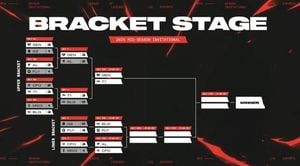The 2025 University Entrance Common Test results, released on January 22, 2025, paint a complex picture of student performance, with experts weighing in on the outcomes of this pivotal examination.
Conducted over January 18-19, the test introduced several subjects, including the new Information I, which is aligned with Japan's updated educational curriculum focusing on digital literacy and practical skills. The average score for Information I was noted at 73.10, as reported by Mainichi Shimbun.
Education analysts have stated the overall difficulty of the exam was standard. Kondo Osamu, the chief researcher at Kawaijuku Educational Research Institute, commented, "The difficulty level was standard," noting it did not overly challenge students. This response aligns with the Education Ministry's aims to assess students' comprehension alongside their technological readiness.
One of the key educational objectives driving the inclusion of Information I was to promote information education as society becomes increasingly digitized. Kanoh Toshiharu, a former official at the Ministry of Education and current professor at Kyoto Seika University, expressed satisfaction with the test's approach: "Information I asked questions balancing knowledge with thinking skills," emphasizing the importance of addressing practical social issues through informed problem-solving.
While some students expressed feeling the questions were simpler than anticipated, the test's overall format aimed for balance, requiring candidates not only to recall information but also to engage with it critically. This may reflect the educational focus of recent years, as schools adapt to the challenges of today's digital society.
The exam's performance allowed for no significant score discrepancies between the newly introduced and traditionally established subjects, indicating effective alignment with the revised curriculum. Kondo stated, "We did not see 20-point differences typical of past exams, demonstrating consistency across standards. This avoided the need for score adjustments this year," highlighting how well these tests were calibrated.
Looking at other major subjects, the results were noteworthy. The average score for the Japanese language component, which is scored out of 200 points, was recorded at 126.13. Mathematics too showed interesting trends, particularly Math II, B, C, with scores averaging at 56.69, reflecting the increased complexity some students faced under the newer curriculum structures.
Another interesting observation came from Uegaki Shinichi, who teaches Information Science at Sundai Prep School. He remarked, "The tests this year leaned more toward practical applications rather than just theoretical knowledge." This shift indicates a strengthening of practical skills assessments, which many educators feel are lacking traditionally.
Interestingly, it's noted this was the first year for the new subject assessments, meaning universities will likely reflect on these outcomes as they revise their admissions criteria. Given the positive average scores and the nature of the questions, there may be shifts where the weight assigned to Information I's score could increase among universities. Uegaki speculated, “We might see the national universities raise the stakes due to this year's relatively good performance.”
This marks the dawn of the Information I subject's potential rise within Japan's educational structure, as institutions may integrate its scores more prominently moving forward.
Going forward, the final average scores from these tests are expected to be widely discussed, with final results due on February 6, 2025. Further analysis may reveal trends and impacts worth reviewing as students prepare for future examinations and higher education entrance applications.
With about 490,000 candidates registering for the Common Test this year, the academic and professional world will keep a close watch on how these initial results shape educational policies and student preparedness across Japan.



